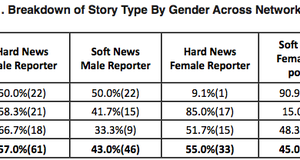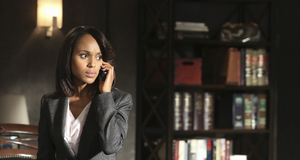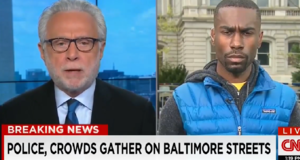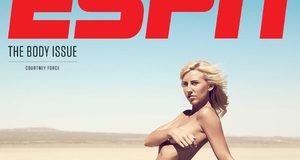Exclusion, Misrepresentation and Discrimination: Still Prevalent for Women in American Media and Politics
By
2010, Vol. 2 No. 01 | pg. 1/1
IN THIS ARTICLE
KEYWORDS
Mass media is perhaps the most powerful tool in the world for creating, changing or perpetuating society’s ideas about an issue or group of people. It works both overtly and subconsciously: deciding which issues are important, how to frame those issues, who to show as affected by them, and, increasingly, providing personal commentaries on the matters at hand. Because the majority of media outlets are owned by corporations dominated by white heterosexual men, many minorities are portrayed in ways that perpetuate negative stereotypes – if they are portrayed at all. Even though women have made great strides towards equality, they continue to experience both misrepresentation and underrepresentation in the modern media. To evaluate the extent of the problem, I watched six episodes of the CBS Evening News with Katie Couric from late March and early April 2009. There were three factors of exclusion and biased representation that I observed during this process: the number of women who appear as reporters and experts, the frequency of women appearing as subjects of stories, and the actions and behaviors selected to be shown in news stories. Each of these factors brought surprisingly low numbers to my attention, and the information I gathered cast an unfortunate light on the state of women in the media. Exclusion of Women in Professional RolesWomen as ReportersEven though CBS Evening News is anchored by a woman, men still enjoy disproportional representation in respected positions on the show. Among correspondents featured, women were reporters on only twelve of forty-one stories discussed, or 29%. Men reported on the remaining 29 stories. Additionally, one third of the female-reported stories were broadcast one the one news day that Katie Couric was out and a Harry Smith was anchoring the show. If that episode is taken out of the equation, the proportion of women to men drops to 24%.This is nothing new for CBS Evening News. A 2006 article in Broadcasting & Cable reported that in the six weeks after Katie Couric arrived, women’s assignments dropped by 40% – as they put it, “her rising tide has not lifted her sisters’ boats” (“Women Scarcer”). The fact that this drop occurred – and that it does not seem to have changed in the last two years – suggests that the show managers have designated Couric as the token female, and that they no longer need to focus on including female colleagues on their program. Women as ExpertsThere were roughly 50 interviews across the six episodes with professionals who provided insight on stories that they were not the subject of. Of these expert and professional interviews, only five were women, and they appeared in just four of the 41 news stories. And of these women, three of them were medical professionals and one was a professor. The one outlier was Rebecca Lindland of IHS Global Insight, a consulting firm which specializes in economics, who spoke on the future of the automobile industry. The fact that virtually all of the female experts were medical experts at first seems like a small silver lining – at least the women who are brought in as experts are in an extremely respected position. However, it soon becomes clear that it is simply a reinforcement of women’s proper roles in society. Not all of the medical experts on the show are women; in fact, even the stories which included these women were reported on by a male doctor, and interviewed one or two other male hospital employees. The medical stories in which female experts were used were on babies and elderly people; stories on heart disease medication and depression featured only male experts. By restricting the place of female experts to the traditional roles of caring for the very young and the very old, the station perpetuates stereotypes of the fields where it is appropriate for women to excel, and those where men are to be the authority. Exclusion of Women as News SubjectsJudging from this sample, women are rarely the subject of news stories at CBS. Excluding Hillary Clinton, Michelle Obama, Queen Elizabeth, and White House Social Secretary Desiree Rogers, only about 30% of these CBS news stories had women as a significant part of a story. Take out the stories where women were incidental to a story about men (such as the numerous updates on the ship captain taken hostage off the coast of Somalia), and that percentage drops to 14% – five stories. Only one of these even remotely approached the realm of hard news – the rest were obviously soft news, which increased from one-fourth to one-third of Evening News stories when Couric became the anchor. It could be argued that the lack of hard news about women is not the station’s fault, but rather a result of the lack of women in hard news. However, this is no excuse for the station’s exclusion. Women are affected by closing car companies, rising bank fees, the military, global finances, and natural disasters just as much as men are, yet all of these stories were presented with virtually no input from or discussion of women. Instead, women were featured in stories about free meals from Denny’s and a senior home bat mitzvah. Even if it requires more work to include women in news coverage, I feel that it is the duty of any reasonable and remotely conscientious news organization to do so. Representation of Women in MediaI was frankly disgusted by the stereotypical depictions of women in CBS’ news stories, although it should not have been a surprise. The vast majority of women shown as subjects of news stories played very “feminine” roles: teachers, wives, mothers and sisters. A good number of these women were also very emotional: they had lost their homes or had family members in danger, and were emotional wrecks while men stood by stoically emotionless. Showing women as weak and men beside them as strong reemphasizes America’s stereotypes of heterosexism and the inferiority of women, and was extremely disappointing to witness. These stereotypes were even more prevalent in the background footage and advertising shown around these stories. When not crying or taking care of children, they were cooking, buying food, shopping, eating at restaurants, getting their hair done, or doing yoga. Even Michelle Obama was planting a garden with schoolchildren. Almost every piece of background footage cast women as consumers and homemakers, rather than as independent people or even visibly employed. I was outraged by the obvious sexism displayed in these selections, because they reinforce vicious stereotypes and antiquated ideas of a woman’s place and her “proper role” in American society. Effects of Media Exclusion and Representation on Female PoliticiansWhen serious news does not include women and women are not involved in professional reporting and advising roles, it sends a message to viewers that men are the only ones qualified to be involved in or have opinions on significant and serious issues. This discourages women from becoming involved in politics, both because they fear that they will not be able to get support from voters and because they feel on some level that they are less qualified than male candidates. With a media climate like this, it’s little wonder women account for only 17% of members of Congress despite the fact that they represent over 50% of the U.S. population (U.S. Census Bureau). It is obvious to those who work in politics that women can be and are successful politicians, economists, executives, and advisors – just look at Hillary Clinton, Sarah Palin, or the 91 women serving in the U.S. House and Senate. Yet these media-reinforced stereotypes have profound impacts on even these successful women. Hillary Clinton was subjected to jeers from men demanding that she make them sandwiches. Sarah Palin was tokenized and micromanaged by the McCain campaign and made to serve as a pretty face rather than an intelligent spokesperson. Countless female politicians are assumed to have political positions that they do not, simply because of their gender and what the media tells voters women should be concerned about. Media stereotypes and inaccurate portrayals have disgusting and wide-reaching effects on the potential for women’s involvement in politics. ConclusionA 2008 research study showed that even though women are seen as equals on specific areas of interest, 20% of people surveyed still believed that men were inherently better leaders simply because of their sex (Barrett). As the most wide-ranging tool for forming public opinion, media’s exclusionary and discriminatory portrayals of women can be given a large part of the blame for women’s continued inability to be successful in the political realm. Women have made great strides towards equality over the years, but it will surely be impossible to truly achieve it until the media steps up and takes responsibility for the role it plays in defining public opinion of women. ReferencesBarrett, Barbara. "Women are Prominent on Tar Heel Ballots, from Local Contests to Races for Governor, U.S. Senator." Raleigh News and Observer 26 Oct. 2008: 1A. “USA Quickfacts.” United States Census Bureau 23 February 2009. 17 Apr. 2009 http://quickfacts.census.gov/qfd/states/00000.html "Women Scarcer On CBS Evening News." Broadcasting & Cable 23 Oct. 2006. 17 Apr. 2009 http://www.broadcastingcable.com/article/106279- Women_Scarcer_On_CBS_Evening_News.php Suggested Reading from Inquiries Journal
Inquiries Journal provides undergraduate and graduate students around the world a platform for the wide dissemination of academic work over a range of core disciplines. Representing the work of students from hundreds of institutions around the globe, Inquiries Journal's large database of academic articles is completely free. Learn more | Blog | Submit Latest in Business & Communications |


















